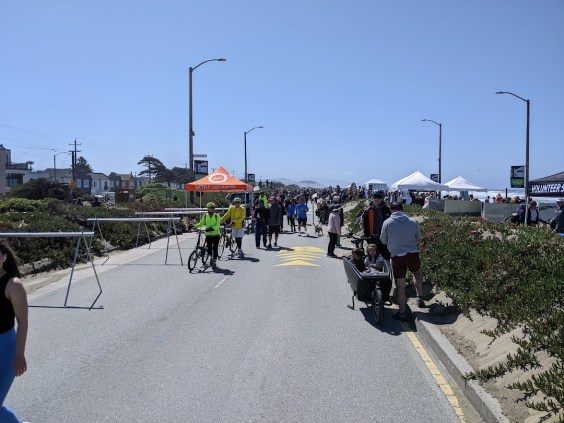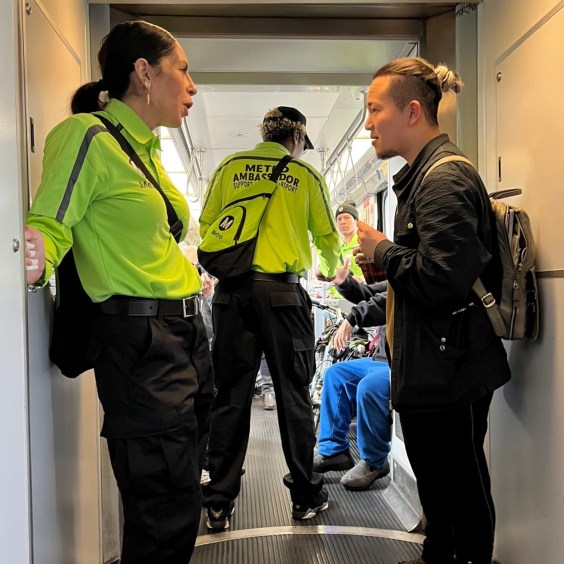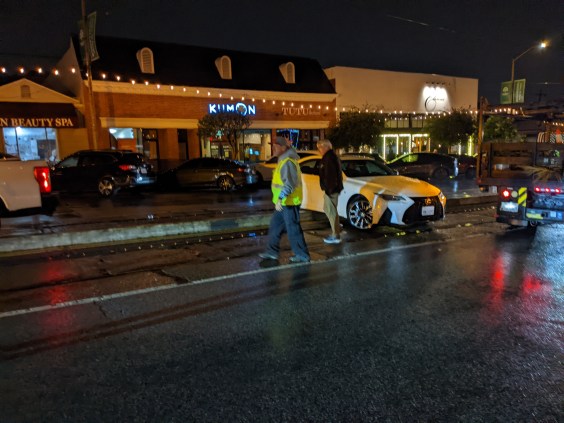Yesterday we reported on some of the terrible amendments that might get tacked on to the House transportation bill this week. But there are also some good ideas with bipartisan support among the hundreds of amendments submitted by members of the House.
Here are three amendments that have the potential to improve transportation policy in the U.S. -- should legislators give them the thumbs up in the next few days.
Amendments 18 and 101: Financing for Transit-Oriented Development
Amendments 18 and 101 would both make federal loans available for the construction of walkable places around transit stations.
Amendment 18 [PDF], sponsored by Dan Lipinski (D-Illinois), Mike Quigley (D-Illinois) and Bob Dold (R-Illinois), would open up $30 billion in federal Railroad Rehabilitation and Improvement Financing to transit-oriented development projects.
"It would expand the eligibility so it's not just about fixing railroads and ties, it's about fixing up the station and the area around the station," said Stephen Lee Davis of Transportation for America.
Similarly, Amendment 101 [PDF], sponsored by the bipartisan pair of Donna Edwards (D-Maryland) and Barbara Comstock (R-Virginia), would open up $200 million annually in loans from the TIFIA financing authorized by the Senate's DRIVE Act to transit-oriented development projects. It would also lower the minimum project cost to apply for TIFIA financing from $50 million to $10 million.
T4A's Davis says financing is still a big obstacle to transit-oriented development, because banks have been slow to adjust to changing preferences.
"This is a way for them to get them done and meet the surging demand for housing near transit and hopefully bring down prices in the process," he said.
Portland-based developer Dennis Allen told Streetsblog via email that financing remains a major hurdle for his transit-oriented development project, Zidell Yards (above).
"Conventional financing is almost nonexistent and possible federal programs created to bridge this gap don't meet the market reality of what's happening on the ground," he said. "If Congress would included TOD provisions into its federal financing programs like TIFIA and RRIF, it would unlock billions of dollars of economic development and private investment around rail transit while increasing ridership."
Amendment 110: Restoring Funding for Transit Projects
As we reported last week, the House transportation bill includes a few key provisions that could undermine transit expansion projects. Specifically, it would reduce the maximum federal match for transit projects funded through the New Starts and Small Starts grant programs, from 80 percent to 50 percent, while forbidding local agencies from using federal loan programs to cover more of the project cost. Highways, meanwhile, would retain eligibility for an 80 percent match.
Advocates say the most damaging aspect of those changes would be the ban on accessing federal loans on top of the 50 percent match, because in practice transit projects haven't been receiving more than 50 percent of funding from grants anyway. Amendment 110 [PDF], offered by Illinois's Lipinski, would change that by ensuring that transit projects can remain eligible for TIFIA loans and other federal financing in addition to the matching grants. If this amendment isn't approved, it could jeopardize projects like Chicago's Red and Purple Line modernization, Lipinski said.
Amendment 131: Flexible Funding for Local Agencies
Amendment 131 [PDF], put forward by 10 sponsors from both parties, would help local governments get a bigger slice of the transportation funding pie.
This measure would increase the share of Surface Transportation Programs funding (about $10 billion annually in total) flowing to local and regional agencies. The share of STP funds flowing to metropolitan planning organizations would rise from 50 percent to 67 percent. Those MPOs then award the money to local transportation agencies on a competitive basis.
The measure would free up funding for high-impact projects supported at the local level of government, rather than state DOTs, which are more likely to favor large highway projects, according to Transportation for America, which has championed the measure.





